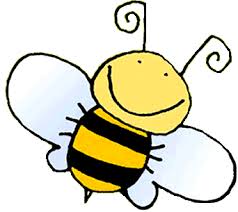
There is a 55-year-old man, a chain smoker and a patient of chronic bronchitis. He was also a severe insomniac and suffered from high blood pressure. He also had anxiety and restlessness.
He had difficulty in initiating and maintaining sleep with very poor day time quality of life. He was on a high dose of tranquilizers and was subjected to humming bee breath besides specific treatment and lifestyle modification.
The word bhramari comes from the Sanskrit name bhramar, which is a humming black bee. Bhramari breathing calms the mind and de-stresses. It reduces tensions, anger, anxiety, insomnia and blood pressure. This pranayama is effective in speeding up the healing of body tissues and may be practiced after surgeries. The purpose of the bhramari breathing is to reduce throat ailments. This may have positive effect on the endocrine glands, specially thyroids and nervous system.
Bhramari breathing has a calming effect on the entire nervous system, especially it stimulates the parasympathetic nervous system, which induces muscular relaxation and is effective in stress management. The sound is similar to chanting of Om, especially the long mmm. The sound should be deep, steady and smooth. By these vibrations the cerebral cortex sends impulses directly to the hypothalamus, which controls the pituitary gland, the master of all glands. This practice of bhramari pranayam is a great tranquilizer. It relieves stress, reduces anger, anxiety, improves sleep initiation and sleep maintenance and helps control blood pressure.
The study was carried out to evaluate the immediate effect of bhramari pranayama, done for five minutes, on heart rate and blood pressure. Initial heart rate and blood pressure of volunteers were recorded. After five minutes of this exercise, the blood pressure and heart rate were recorded again. Both the systolic and diastolic blood pressure decreased, with a slight fall in heart rate. The fall in diastolic pressure and mean pressure was significant. The result indicated that slow paced bhramari pranayama for five minutes induced parasympathetic dominance on cardiovascular system.
Steps:
To practice bhramari pranayama sit in a comfortable posture with spine straight, hands resting on the knees, eyes closed and body relaxed. The lips remain gently closed with teeth slightly separated and the tongue at the bottom of the mouth throughout the practice, which allows sound vibration to be heard and felt more distinctly in the brain. The jaws are relaxed.
Now raise the arms sideways with elbows bent, bringing the hands to the ears, using the index or middle finger to plug the ears. The small flaps of ears may be pressed without pressing the fingers. We become aware of the centre of the head, where Ajna chakra is located. Keeping the body absolutely still, breathe in deeply through nose, then exhale slowly and in a controlled manner while making a steady humming sound like that of a bee.
The humming sound is a soft, vibrating melody which resonates in the head. Repeat this for five rounds and then slowly take normal breath and focus on breath.
You may feel little cold or tingling sensation in the throat due to sound but this is normal. Under no circumstances the proportion of the breathing should be forced. If you feel dizzy then please stop the practice and continue normal breathing.
With regular practices of brahmari pranayam the restlessness and anxiety of the above mentioned patient improved. His sleep quality significantly improved as well. The best part it helped him to quit smoking and reduced his chronic cough.

